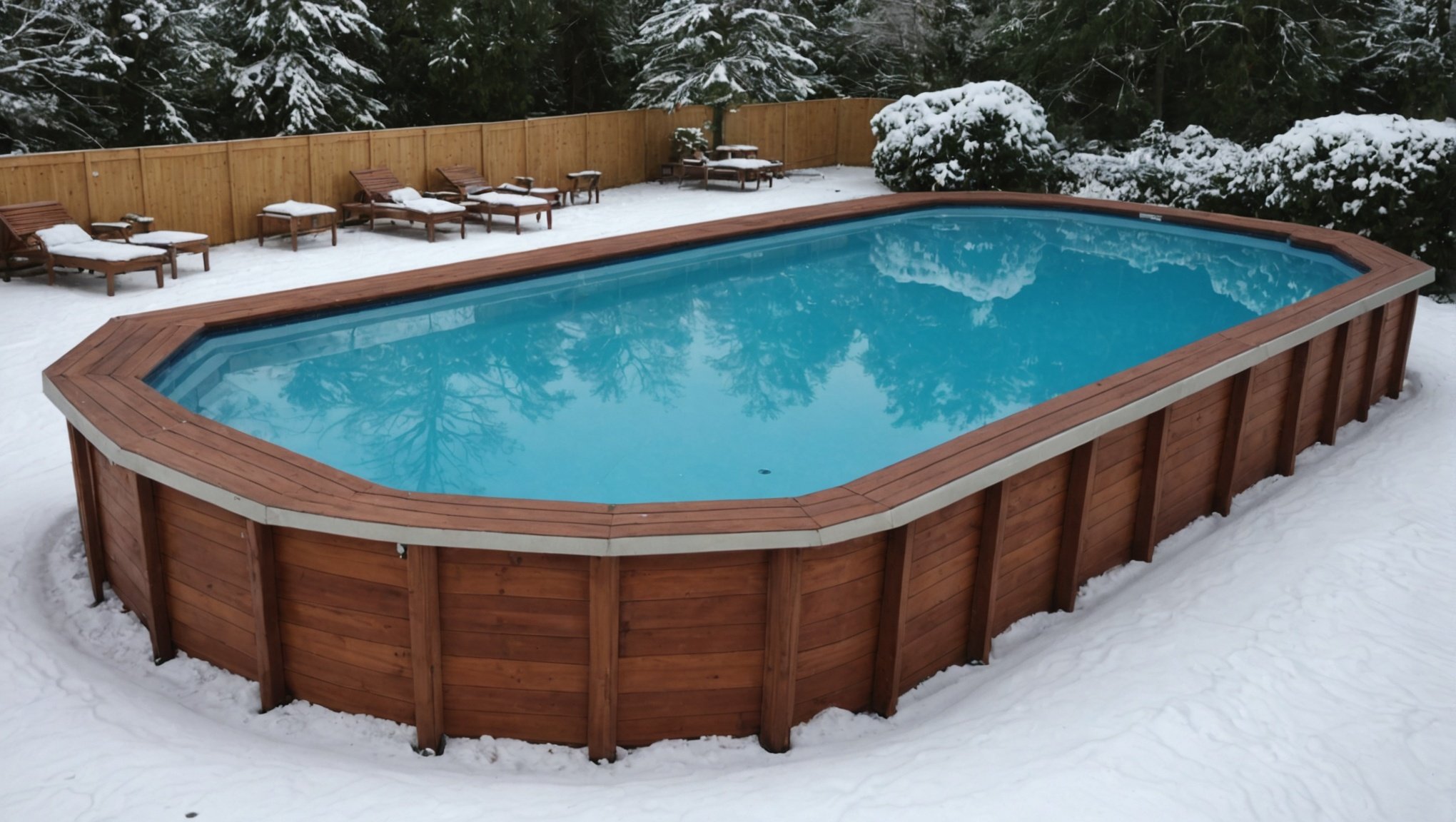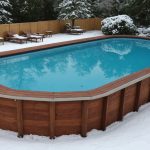Winter is a chilling season, especially in the UK, where temperatures can plummet drastically. During this time, it’s essential to ensure your swimming pool is well-prepared to withstand the harsh weather conditions. Winterizing your pool might seem like a daunting task, but if you follow the right steps, it can be straightforward, guaranteeing the health and longevity of your pool. This article offers a comprehensive guide on how to winterize your swimming pool, detailing key steps, essential equipment, and necessary chemicals. Read on to get all the insight you need.
The Importance of Winterizing Your Pool
Before we delve into the winterizing process, let’s first understand the importance of this task. Your swimming pool is a significant investment, and winter, with its freezing temperatures and harsh weather, can wreak havoc on it. Ice can damage the pool’s structure, freezing water can break pipes, and neglected water can become a breeding ground for bacteria and algae.
Winterizing your pool helps prevent these potential damages and keeps the water clean, making the pool’s reopening in spring easier and less costly. It can also extend the lifespan of your pool equipment, saving you money in the long run.
Steps in Winterizing Your Swimming Pool
Winterizing your pool is not something you just wake up and do. It requires strategic planning and execution. Here are the crucial steps to follow.
1. Balancing the Water Chemistry
Just before you close your pool for the winter, it’s important to balance the water chemistry. This step protects the pool from scale buildup and corrosion, and helps the chlorine work effectively. You can test the water using a water testing kit and adjust the chemical levels as needed. The ideal levels are: pH 7.4 to 7.6, alkalinity 100 to 150 ppm, and calcium hardness 175 to 250 ppm for vinyl pools and 250 to 500 for plaster pools.
2. Cleaning the Pool and Lowering the Water Level
The next step involves cleaning your pool thoroughly to remove any debris, leaves, or dirt that could contaminate the water during winter. You can use a pool vacuum or net for cleaning. Afterward, lower the water level to prevent it from freezing and damaging the pool. The water level should be below the skimmer and return lines.
3. Protecting the Pool Equipment
Your pool equipment, such as the pump, filter, and heater, also needs protection from freezing temperatures. You can do this by draining water out of them. Remember to remove all drain plugs and store them safely for the next season.
Choosing the Right Pool Cover
A cover is crucial in winterizing your pool. It prevents debris and leaves from falling into the pool and keeps the water clean. But not just any cover will do. You need to choose a cover that fits your pool perfectly and can withstand the harsh winter conditions.
There are various types of pool covers, including mesh covers, solid covers, and safety covers. Mesh covers allow water to seep through but keep out debris, while solid covers completely cover the pool and prevent water and debris from getting in. Safety covers are designed to prevent accidental falls into the pool.
When choosing a cover, consider factors like durability, ease of use, and the level of protection it offers. Ensure it fits your pool perfectly and has a strong anchorage system to withstand wind and weight of snow or ice.
Adding Winterizing Chemicals
The last step in the winterizing process is adding winterizing chemicals to your swimming pool. These chemicals are designed to keep the water clean and clear during the winter months. They include a winterizing pool algaecide to prevent algae growth and a pool anti-freeze to protect the pool from freezing temperatures.
Before adding these chemicals, make sure the pool is clean and the water is balanced. Then, follow the manufacturer’s instructions on how much to add based on the size of your swimming pool. After adding these chemicals, let the pool pump run for a few hours to ensure they’re evenly distributed throughout the pool.
These steps offer a comprehensive guide on how to winterize your swimming pool in the UK. Adhering to them will not only protect your pool from winter damage but also ensure it’s ready for use when the warmer weather returns. Remember, pool maintenance is a continuous process, and keeping up with it can save you a lot of trouble and money in the long run.
Advantages of Passive Winterizing
When considering the process of winterizing your swimming pool, it’s worth considering passive winterizing. This method is becoming increasingly popular in the UK, especially for homeowners with above-ground pools and hot tubs. Passive winterizing banks on the idea of maintaining your pool throughout the winter, keeping the pool equipment active, and using a pool heater to keep the water from freezing.
Instead of fully draining your pool, passive winterizing involves lowering the water level slightly and running the pool heater to keep the water at a temperature that prevents ice formation. It requires a minimum water temperature of 12°C, and the pool pump should be run for several hours each day, especially during freezing weather.
Passive winterizing can be more energy-intensive since it involves running your pool heaters during the winter months. However, it eliminates the need for a complete water change in the spring, which can be a significant advantage. Additionally, passive winterizing reduces the risk of damaging your pool equipment due to freezing and thawing cycles.
It’s important to remember that passive winterizing requires commitment. You will need to regularly check your pool water, inspect the equipment, and adjust the pool heaters as necessary. Yet, it can be a worthwhile investment, especially if you have a hot tub where enjoying warm water in cold weather can be particularly appealing.
Special Offers for Winter Pool Maintenance and Equipment
Keeping your swimming pool in good condition during the winter months can sometimes be a costly affair. However, many suppliers and service providers offer special offers on winter pool maintenance and equipment, making it more affordable for homeowners.
Look out for discounts on winter pool covers, pool heaters, and winterizing chemicals. These offers can significantly reduce the overall cost of winterizing your swimming pool.
For instance, many suppliers offer discounts on pool heaters towards the end of the summer season. This is an excellent opportunity to invest in a pool heater, especially if you’re considering passive winterizing.
Also, consider hiring a professional pool maintenance service for winterizing your pool. Many companies offer discounted packages for winter pool maintenance, including water treatment, equipment protection, and cover installation. This not only ensures your pool is winterized correctly but also saves you time and effort.
Remember, taking care of your pool is a long-term investment. By availing of special offers, you can ensure your pool stays in top condition without a hefty price tag.
Conclusion
Winterizing your swimming pool in the UK is a crucial task. It protects your pool, hot tubs, and equipment from the harsh winter weather, ensuring their longevity. Whether you choose to deploy the traditional winterizing method or opt for passive winterizing, it’s essential to understand the necessary steps and considerations, such as maintaining the correct water level, using the appropriate pool covers, and ensuring the correct balance of water treatment chemicals.
Don’t forget to look out for special offers on pool winter maintenance and equipment to make the process more affordable. Remember, a well-maintained swimming pool not only provides a great place to unwind but also adds value to your property. So, invest time and effort in winterizing your pool and ensure it’s ready for the swimming season whenever it arrives again!
















